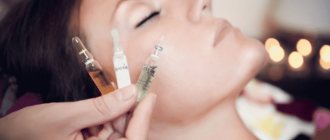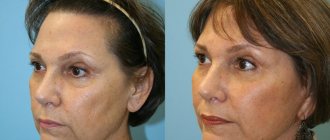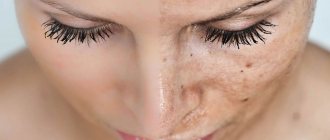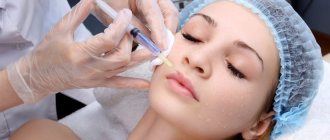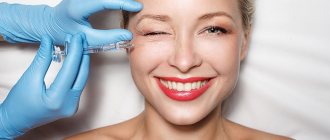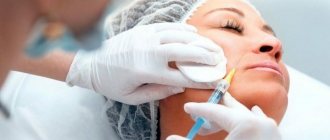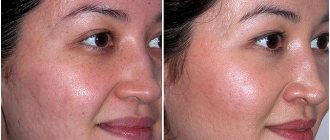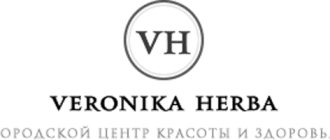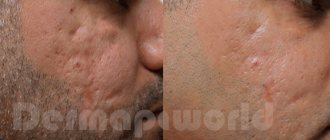From this article you will learn:
- Facial mesotherapy – what kind of procedure is it, reviews,
- what drugs are better to choose,
- before and after photos, price 2022,
- mesotherapy or biorevitalization: which is better.
Mesotherapy is a method of intradermal administration of active components, which can be aimed at rejuvenating the skin of the face and neck, improving the condition of hair, treating problematic skin in patients with acne and seborrhea, as well as combating local fat deposits and cellulite. The method was invented by the French physician Michel Pistor in the 60s of the last century, and was initially used only for the treatment of cellulite.
There are a huge number of active ingredients that are used in mesotherapy preparations. Preparations for the prevention and treatment of skin aging usually contain various combinations - hyaluronic acid, vitamins, microminerals, antioxidants, amino acids, regulatory peptides, nucleotides. Moreover, the composition of the drugs is selected for each patient individually - taking into account age, type of skin aging, the presence of hyperpigmentation or rosacea.
For local obesity and cellulite, lipolytics (phosphatidylcholine, deoxycholate, L-carnitine, etc.) are used. But the most widely used group of drugs in mesotherapy are vascular and drainage drugs, for example, “Artichoke”, “GAG Complex DVL Capyl” and others. They are used not only in complex treatment programs for cellulite and local fat deposits, but also occupy one of the leading places in rejuvenation programs for patients with deformational (edematous) type of aging.
Classic mesotherapy involves injection of active components into the dermis or subcutaneous fat. Injections are made with very thin 30, 31 or 32G needles (32G needle diameter = only 0.23 mm). The so-called fractional mesotherapy of facial skin, where mesococktails are used in combination with the DermaPen device or mesoscooters, shows good effectiveness. Less effective is the so-called needle-free facial mesotherapy (using pulsed iontophoresis devices), but it is indicated for patients with a tendency to keloid scars.
Indications for mesotherapy of the face and neck –
- Therapy and prevention of biological aging of the skin - in order to improve the color, texture, elasticity of the skin, reduce the depth of wrinkles and folds,
- therapy and prevention of photoaging (increasing skin hydration, correction of hyperpigmentation and rosacea),
- improving the skin condition of smokers,
- local obesity (double chin, fat bags on the face),
- problematic skin with acne,
- preparation for medium/deep chemical peels, plastic surgeries, as well as rehabilitation after them.
Local fat deposits on the face are a separate big topic, which we discussed in the article on correcting a double chin.
Nevertheless, it must be said that the use of lipolytics in combination with drainage drugs is also indicated in complex rejuvenation programs for patients with deformational (edematous) type of aging, making it possible to reduce the volume of soft tissues, the depth of folds, and the severity of gravitational ptosis. Speaking about mesotherapy for acne, it is worth noting that injections of mesopreparations can only bring the patient out of an exacerbation, reducing the number and severity of inflammatory elements. But as for the correction of atrophic scars after acne, fractional mesotherapy (using DermaPen or a mesoscooter) works better here. By the way, the same situation is with stretch marks on the body - classical injection mesotherapy is completely ineffective here, and fractional mesotherapy is quite the opposite.
Rehabilitation after non-injection mesotherapy
Important rules to follow:
- Do not visit the swimming pool, sauna, SPA salons, or solarium. Avoid exposure to direct sunlight. During rehabilitation, adhere to a gentle temperature regime.
- Refrain from training and intense exercise for two days after non-injection mesotherapy.
- Don't drink alcohol. The use of medications must be prescribed and approved by a cosmetologist.
- Provide gentle care to your skin and do not apply decorative cosmetics to it.
- If you experience hyperemia after non-injection mesotherapy, you need to buy ointments and balms with a soothing anti-inflammatory effect and apply them to the treated areas.
During the first seven days after the procedure, it is advisable to use sunscreen with an SPF of at least 40 before going outside. Consult your doctor first if you plan to combine non-injection mesotherapy with other types of cosmetic procedures.
A week after the session, try to take gentle care of your skin. Use moisturizing and nourishing products with a light gel consistency. Do not neglect the rules of the rehabilitation period to avoid possible negative consequences of mesotherapy.
Features of facial mesotherapy and its differences from biorevitalization -
Many patients do not understand how mesotherapy differs from biorevitalization, because in principle these are very similar techniques, which use both the same injection techniques and similar active components. But nevertheless, these differences are very important, and will allow you to decide how suitable one or another method is for you. The main differences lie in the characteristics of the drugs used, so let's take a closer look at how mesopreparations differ from biorevitalizants.
The first difference is that mesotherapeutic preparations use much lower concentrations of active components. For example, in mesopreparations the concentration of hyaluronic acid (HA) is usually 0.3-0.5% (rarely up to 0.8-1.0%), and in biorevitalizants it is most often no less than 1.8-2.0%. The second difference is that mesopreparations contain, as a rule, low molecular weight HA (with a molecular size of 200-800 kDa), while biorevitalizants contain high molecular weight HA, from 1800 to 3000 kDa.
It should be noted that the larger the size of the hyaluronic acid molecules, the more pronounced the moisturizing effect of the drug on the skin will be, and secondly, the slower the HA molecules will be destroyed under the influence of the hyaluronidase enzyme, which means the effect of the drug will last longer. The third difference concerns the form of release of the drugs. Mesopreparations are produced on a water or sol basis (sol - liquid gel), which means rapid distribution in tissues, as well as very rapid elimination.
That is why mesotherapy procedures on the face and neck are done once a week. But biorevitalizants are always produced in the form of viscous gels, which improves the deposition of active substances at the site of each injection. The gel will dissolve more slowly, which means the active substances in its composition will act on the tissue longer. Therefore, biorevitalizants are usually administered once every 2 weeks, but there are preparations containing stabilized HA that can be administered only once every 3-4 weeks.
Important: thus, for biorevitalization, drugs are used that allow achieving more intense rejuvenation (the cost of biorevitalizants is many times higher than the cost of meso-preparations). Based on all of the above, you should understand why the cost of 1 mesotherapy procedure usually starts from 2,500 rubles, and biorevitalization - on average from 9,000 rubles or more for 1 procedure. Different properties of the drugs create differences in the frequency and number of procedures.
For example, mesopreparations are done once a week, and in patients 35+ the course will usually consist of 10-12 procedures, while biorevitalizants are done once every 2-3 weeks, and the course will consist of 3 to 7 procedures (depending on the severity of age-related changes). As for relatively young patients who seek prevention or only minor correction of changes, short courses of mesotherapy will be preferable for them. But for patients 45+ (and even more so after menopause), mesopreparations will no longer work at all.
→ Rating of drugs for biorevitalization
Home mesotherapy
Unfortunately, salon mesotherapy procedures are not always affordable (on average, one rejuvenation session ranges from 3,000 to 10,000 rubles), so means for performing mesotherapy at home are becoming increasingly popular. You just need to purchase a special device - a mesoscooter.
The mesoscooter is a roller equipped with many small needles.
By massaging your face with such a massager with a cream or serum previously applied to it, you can achieve deeper penetration of its components into the skin. True, home mesotherapy is not as effective as a salon procedure, but the result will still be noticeable. The main thing in achieving the effect is the regularity of massage.
Mesotherapy and types of skin aging: important
From the outside it may seem that mesotherapy is a very simple technique - you just need to take a more expensive drug with a large number of active ingredients and inject it over the entire area of the face and neck. And so several times, and continue to wait for the onset of rejuvenation. And it seemed like everything was done, but for some reason rejuvenation never came.
Of course, perhaps you initially had too high expectations from the course of mesotherapy, and you refused biorevitalization due to price considerations. However, it is also possible that the treatment was carried out without taking into account individual characteristics, for example, the type of skin aging. Russian women are characterized by 2 main types of aging - these are primarily deformational (edematous) and finely wrinkled types of aging. But, of course, no one has canceled the mixed and tired types of aging either.
When is mesotherapy needed?
Mesotherapy helps in solving many skin problems. Feel free to go to a cosmetologist if:
- you have been in unfavorable climatic conditions for a long time,
- you have decreased tone of the facial muscles,
- skin laxity is observed,
- signs of aging, wrinkles,
- the skin has lost its former elasticity and firmness.
Indications for the mesotherapy procedure are also:
- presence of a double chin,
- seborrheic dermatitis,
- acne,
- acne,
- nasolabial folds,
- skin creases,
- excessive pigmentation,
- dark circles under the eyes,
- swelling under the eyes,
- scars,
- scarring,
- rosacea,
- excessive paleness of the skin.
Having studied the condition of the skin and its problems, identifying the presence or absence of allergic reactions, the specialist will advise which method should be used in a particular case and select the most suitable drugs.
How does the mesotherapy procedure work?
Injections of mesopreparations: photo
As we said above, injections of mesopreparations are made using a syringe and very thin needles 30, 31 or 32G (needle diameter 32G = only 0.23 mm). In mesotherapy, there are 4 main injection techniques - nappage, papules, tubercles, and linear-retrograde technique. Anesthesia will be required before the procedure begins. Pain relief during mesotherapy of the face and neck is carried out using a cream or gel based on the anesthetic lidocaine (in concentrations from 5 to 12%). The cream is applied to the face under the film for 20 minutes.
Above, we already told you about lymphatic drainage vascular injection of the face and neck (capillary mesotherapy), which is necessary to activate lymphatic drainage and blood supply to the skin. This is necessary both for patients with finely wrinkled type of skin aging, and especially for deformational/edematous type of aging. But if with the finely wrinkled type the vascular injection is done only in the first 1-3-5 procedures (we look at the condition of the skin and age), then with the deformation type the vascular injection should be done in each of the 10-12 procedures.
Lymphatic drainage vascular puncture technique –
During mesotherapy of the face and neck, a vascular puncture will activate the regional lymph nodes of this area, improve lymphatic drainage, relieve swelling of the dermis and subcutaneous fat, strengthen the walls of blood vessels, and also reduce the volume of fat bags on the face and neck. For example, your wrinkles, jowls or double chin will also be reduced. For vascular/lymphatic drainage injection, drugs such as “GAG Complex DVL Capyl formula”, “Gingko Biloba”, “Artichoke”, “Rutin + melito extract” are used.
Small injections are made into certain areas: the entire cervical-collar area (to the level of the shoulder blades), on the face and neck - in the projection of all groups of lymph nodes. If there is a large volume of fat on the face and neck, we can also pierce the middle/lower third of the face along the massage lines + the entire second chin. The volume of vascular preparations for 1 procedure is 5 ml. And only after this (in the second part of each procedure) we do injections of mesopreparations aimed at rejuvenation.
Another option is not to use age-correction drugs at all during the first 2-3 procedures, but to combine vascular lymphatic drainage injection on the face and cervical-collar area with the use of soft lipolytics. Lipolytic injections are made in the area of excess fat, such as lip bags, nasolabial folds, jowls and double chin. And starting from the 3-4th procedure, we begin to combine vascular drugs with mesopreparations intended for age correction.
Mesotherapy injection techniques –
There are only a few of these techniques, and below you can read not only their descriptions, but also see videos demonstrating them. Please note that injection techniques in mesotherapy and biorevitalization are completely the same, so do not be embarrassed if the term biorevitalization sometimes appears in the videos below. The process of injecting the mesopreparation usually takes no more than 15-20 minutes (not including time for lymphatic drainage vascular injection, anesthesia, and a regenerating mask after the procedure).
1) “Nappage” technique (superficial, middle, deep) – with superficial nappage, the tip of the needle does not penetrate the dermis, i.e. the doctor works only at the depth of the epidermis, which will mean the absence of blood discharge from the needle insertion points. This technique is characterized by too much consumption of the drug, which must dry on its own. In theory, this should help the active substances penetrate the dermis, but in fact this is the most ineffective of mesotherapy techniques.
The median nappage technique is much more effective, and in this case microdoses of the drug will enter the upper layers of the dermis to a depth of 1-1.5 mm (hence, there will definitely be blood dew from the injection sites). With each needle insertion, only 1 drop of the drug is released, which usually does not cause the formation of papules, or they quickly disappear. But the deep nappage technique is used in patients with thick skin and is distinguished by the fact that the needle is inserted already at 2-3 mm.
Nappage: superficial (video 1) and middle (video 2)
2) “Papules” technique (superficial or middle) - this technique involves injections into the upper or middle layers of the dermis, so that at the site of each injection a “papule” will appear, which looks like an elevation above the surface of the skin. The size of the papules will depend on the volume of mesopreparation injected into the tissue at each needle insertion point. Papules can be small (about 1-2 mm) - in this case they are called micropapules. The volume of the drug at each point will be about 0.01-0.02 ml, and the distance between them will be from 0.3 to 0.5 cm. Such papules are made in areas with thin skin, for example, in the periorbital zone.
In areas with denser skin, papules are made to a standard size, i.e. with a diameter of 3-4 mm. The volume of the drug at each point will be about 0.03-0.04 ml, and the distance between injections will be about 1.0-1.5 cm. Keep in mind that the larger the papules, the slower they will dissolve. Usually papules disappear within 2-3 days, less often - up to 5-7 days. Sometimes papules can take up to 2-3 weeks to resolve, but this is usually due to a doctor’s mistake (when a cosmetologist administered a drug based on stabilized HA in the form of standard papules, which cannot be done).
Papule technique: video
3) “Tubercles” technique – if the previous technique involves introducing mesopreparations at an angle of 15 degrees to the surface of the skin (into the superficial and middle layers of the dermis), then in this case the drug is injected with a 32G needle at an angle of 45 degrees to the entire depth of the needle. In this case, the drug depot is created in the deep layers of the dermis, at a depth of approximately 3 mm. This technique is distinguished by the absence of elevations on the surface of the skin in the form of papules, and after the procedure only traces of needle injections will be visible. However, this technique has a greater risk of hematomas.
4) Linear-retrograde technique - technically this technique is the most complex, and it came to mesotherapy from contour plastic surgery. If for all previous techniques 4 mm needles are most often used, here they are 12-13 mm long. After injection, the needle moves into the dermis parallel to the surface of the skin over its entire length. The drug is eliminated when the needle moves backwards in a retrograde manner. This is the most effective mesotherapy technique, although it is more traumatic. But the fact is that in this case, additional trauma to the dermis is a plus - the body responds to it with regeneration and an increase in collagen synthesis.
Linear-retrograde technique: video
Types of non-injection mesotherapy
This non-invasive method of improving skin condition has several varieties. For example, according to the area of application, non-injection mesotherapy of the body, face, scalp, neck, arms and legs is distinguished. There is a division of cosmetic procedures into types depending on the method of impact on the skin. Each of them has its own characteristics. The procedure technology is selected individually. This takes into account the client’s age, her needs, the condition of the skin, as well as the desired result after a course of non-injection mesotherapy.
Electroporation
The method is ideal for those who prefer to avoid pain. Electroporation is a non-injection mesotherapy that is carried out under the influence of an electromagnetic field. The method ensures good permeability of cell membranes, while the beneficial substances from the cocktail quickly and deeply penetrate the skin.
A course of electroporation sessions will help normalize water balance, accelerate the synthesis of elastin and collagen, and increase the flow of oxygen.
Magnetophoresis
During the procedure, the skin is exposed to an alternating or constant low-frequency field. Magnetophoresis is a hardware-based non-injection mesotherapy in which the nutrients of meso-cocktails penetrate deep into the skin under the influence of a magnetic field.
Oxygen mesotherapy
The essence of the procedure is to saturate the skin cells with oxygen supplied under pressure by a powerful jet. During this beauty treatment, nutrients are combined with oxygen, enhancing internal physiological processes. To obtain a noticeable effect, a course of 2-3 procedures is sufficient.
Oxygen non-injection mesotherapy helps reduce rashes, smooth out fine wrinkles, narrow pores and normalize the functioning of the sebaceous glands. In addition, the cosmetic procedure whitens age spots, reduces the size of scars and scars on the skin.
Ultraphonophoresis
With this method, ultrasonic vibrations act on the skin. They are involved in transporting the nutritional components of the serum deep into the cells and tissues of the skin.
Iontophoresis
The effect of the nutritious meso-cocktail is enhanced by galvanic current. The essence of iontophoresis is simple: molecules of useful substances are ionized, which makes it easier for them to penetrate the cell. This procedure, performed on a non-injection mesotherapy device, strengthens blood vessels, normalizes blood circulation, and improves metabolism.
Laser mesotherapy
The procedure ensures deep penetration of all nutrients from the meso cocktail into the skin. This type of non-injection mesotherapy has a higher cost than others, but the result looks better and is achieved faster. The course usually contains about 15 procedures. Sometimes after the session there is slight redness, which quickly subsides.
This method of non-injection mesotherapy is reminiscent of fractional mesotherapy, which is also performed with a laser. Its distinctive feature is that injections are not used. Laser mesotherapy has a cumulative effect. Infrared radiation helps improve microcirculation, create a lifting effect and achieve rejuvenation.
Cryogenic mesotherapy
The essence of the method is a three-way effect on the skin - serums with active ingredients, cold (liquid nitrogen), and electrical waves. Under the influence of liquid nitrogen, blood vessels sharply narrow and then gradually expand. Cryogenic mesotherapy has virtually no contraindications, as it does not cause any side effects.
The temperature and duration of the procedure are selected individually for each client. Many factors can influence this. The session time and temperature conditions are determined, in particular, by the condition of the skin, its reaction to cold, as well as the task at hand. Cryogenic mesotherapy is painless. For a pronounced lifting effect, 1–2 procedures are sufficient. Due to exposure to cold, slight redness of the skin may occur, which will not remain a trace after applying a special mask.
We recommend
Laser aesthetic cosmetology: perfect technology for an ideal appearance Read more
Aquaphoresis
A popular cosmetological method that combines lymphatic drainage, electrical stimulation and laser treatment of the skin. Aquaphoresis activates metabolic processes in cells, eliminates swelling and helps normalize fluid outflow. This method of non-injection mesotherapy, according to reviews from clients and cosmetologists, restores skin tone, elasticity and normalizes hydrobalance.
Mesococktails for non-injection mesotherapy
The nutrients contained in non-injection mesotherapy preparations help rejuvenate the skin. The composition of meso cocktails is selected individually. The use of certain components is determined by the condition of the skin before non-injection mesotherapy and the desired result after the course of procedures. The patient cannot independently select nutrients; this is the task of the cosmetologist.
What components are most often used for meso cocktails?
- Vitamins . They, along with microelements, are necessary for skin health. A deficiency of these beneficial substances contributes to the appearance of pigmentation, a painful shade of the skin, and the appearance of premature wrinkles. Vitamins are needed for breathing, restoration and renewal of the skin. Thanks to minerals, proper metabolic processes occur at the cellular level, and the immune system is strengthened.
- Glycolic acid . In meso cocktails it plays the role of a “rejuvenating apple”. In nature, glycolic acid is present in large quantities in fresh fruits and canes. The substance has a small molecular weight, so its particles have high penetrating ability and quickly enter the skin cells. This is an important property for non-injection mesotherapy. Glycolic acid acts as a catalyst in the formation of new cells, as well as the elimination of dead skin particles. In addition, the substance is a natural antioxidant. Non-injection mesotherapy with a mixture of glycolic and hyaluronic acids perfectly smoothes small wrinkles and reduces the depth of large ones.
- Hyaluronic acid . It is the main component of most cosmetic products for improving skin condition. The substance retains moisture inside the cells and activates the production of “youth proteins” - collagen and elastin. After non-injection mesotherapy with hyaluronic acid, the skin becomes firm and elastic.
- Other components . In addition to the substances listed above, meso cocktails may contain amino acids, collagen, herbal and plant extracts, as well as medications. The composition of the nourishing serum is determined by the cosmetologist after assessing the current condition of the skin and taking into account the desired result.
Facial mesotherapy before and after: photos, reviews
On the websites of cosmetology clinics you will almost never find real photos before and after facial mesotherapy, because... To sell procedures, clinics only post photos of successful treatment cases, or even more often, they post photos of patients after hardware rejuvenation techniques - as if they had undergone a course of mesotherapy. However, you should know 2 important points. Firstly, the effectiveness of the same drug (even though the same number of procedures were performed) can vary greatly in different patients.
And secondly, facial mesotherapy, by definition, is much weaker than biorevitalization, and therefore it cannot achieve very pronounced changes, especially if you have aged but well-groomed skin. But if you have never paid much attention to your facial skin before, the effect of mesotherapy will certainly be obvious. Below we present cases of clinical treatment in patients aged 35+ and 45+.
Example #1 –
Shows the effectiveness of facial mesotherapy with a single preparation of hyaluronic acid. The following photographs are taken from an independent clinical study. Each patient was injected with 2.0 ml of Restylane Vital (a monopreparation of 2% partially stabilized hyaluronic acid) during 1 procedure. Moreover, the course of treatment consisted of 3 procedures performed with an interval of 4 weeks.
Facial mesotherapy: before and after photos
As you can see, the effect of using even a single course of hyaluronic acid in patients aged 35 and 46 years is practically not noticeable. Such drugs, in our opinion, are best used to prevent aging at a younger age, but not for age correction.
Example No. 2 –
The following photos were taken by cosmetologist Victoria Petrovskaya. The patient underwent a course of 4 procedures (with a frequency of 1 time every 2 weeks). At the beginning of each procedure, a lymphatic drainage vascular injection was first performed with the drug “GAG Complex DVL Capyl”. Then, for each procedure, the mesopreparation “Hydro Line P-Anti-wrinkles” was used for the periorbital area, and “Hydro Line Peptide” was used for all other areas of the face. The after photos were taken after the second procedure.
Example No. 3 –
The photographs below were taken by cosmetologist E. Kuvshinnikova. The patient underwent a course of 5 procedures. The first 3 procedures used the drug "Hydro Line" (with a frequency of 1 time - every 7-10 days), and in the last 2 procedures - the meso drug "Hydro Line Peptide" (with a frequency of 1 time in 2 weeks). Capillar mesotherapy was not carried out, but, of course, a positive effect was achieved. But in the following example you can see how effective biorevitalizants or their combinations with mesopreparations can be.
Example No. 4 –
The photos below were taken by cosmetologist Irina Pyagai. The patient underwent a course of eight procedures (with a frequency of 1 time in 10 days). At the beginning of each procedure, a lymphatic drainage vascular injection was first performed with the drug “GAG Complex DVL Capyl”. After this, rejuvenation drugs were used in each of the eight procedures. Please note that in this course of treatment a combination of biorevitalizants (in the first 5 procedures) and mesopreparations was used in the last 3 procedures.
"Nucleospire Revitalizing Complex A"- "Hydro Line Revitalizing Complex B formula",
- "Nucleospire DNA-RNA 2%",
- "Hydro Line Revitalizing Complex B formula",
- "Nucleospire DNA-RNA 2%",
6,7,8 procedures – mesopreparation “Nucleospire DNA-RNA 1% DM Peptide”.
What is non-injection mesotherapy
In 1952, the French doctor Michel Pistor first proposed a unique technique called mesotherapy. She performed well and is now popular all over the world. Non-injection facial mesotherapy - what is this procedure? The essence comes down to applying a special vitamin cocktail to the skin, followed by treatment with a special device. The procedure is very effective due to the deep penetration of beneficial substances into the skin. The permeability of the cell membrane during the session increases 400 times.
Non-injection mesotherapy uses a serum based on amino acids, vitamins and minerals. They penetrate deep into the skin, nourishing and rejuvenating it. Thanks to the non-injection mesotherapy procedure, cell hydration is restored, microcirculation is normalized and the production of “youth proteins” (collagen and elastin) is improved. The skin acquires freshness, elasticity and a radiant appearance.
Recommended articles on the topic:
- Ultrasonic facial peeling is a pleasant and beneficial procedure for your skin
- Redermalization of the skin: all the pros and cons
- Almond peeling for the face: features of the procedure
Penetrating 1–2 mm inside, the beneficial substances act almost instantly. Part at a deep level is put aside so that the skin can be nourished for some time after the procedure. Thanks to the “storehouse” of useful substances, the duration of the rejuvenating effect is achieved. How often to do non-injection mesotherapy? To achieve maximum results, it is recommended to take a course of 4–6 sessions. This frequency will slow down skin aging and prolong your youth for at least a year.
How much does facial mesotherapy cost – price 2022
If you decide to undergo facial mesotherapy, the price for 1 procedure will depend on the cost of the drugs administered, as well as the pricing policy of the clinic. In advertising you can often see that for facial mesotherapy the cost of 1 procedure starts from only 2,500 rubles, however, if we are talking about high-quality drugs, then this amount is only the minimum cost of consumables.
For example, we decided to do a lymphatic drainage vascular injection with the drug “GAG Complex DVL Capyl”. Only its cost for 2022 will be 300 rubles. Then we take the cost of one of the above drugs - this is another 800 to 1400 rubles. You also need all kinds of consumables (several expensive 30 and 32G needles for injections, sterile sheets, gloves, the cost of anesthesia and many other little things) - that’s another few hundred rubles. Thus, 1600-2000 rubles is only the cost of materials.
But prices should take into account the costs of training a mesotherapist, and rent, and depreciation of equipment, and wages. Typically, for frequent cosmetologists the markup is + 100-150%, and for private cosmetology clinics the markup is + 150-200% (to the cost of all consumables). Thus, the normal price, for example, for the above complex with vascular injection and the drug “Hydro Line Extra” should be at least 4000-4500 rubles.
Important: but if we take more expensive drugs from a series of biorevitalizants, for example, “Nucleospire DNA-RNA 2%” (2.0 ml), only the cost of which is 4000 rubles, then the final cost of the service together with the vascular injection should not cost any less 9000 rubles. And here we gradually come to the question of why some patients have negative reviews of mesotherapy, and they say that it does not work. Yes, simply because, for example, cosmetologists almost never perform capillary mesotherapy on patients.
The latter takes a lot of time (and time is money), plus it takes a long time to explain to patients why this is needed at all. It's easier not to do it at all. Secondly, the right drugs and their combinations are not always used - which we told you so much about above. As a rule, this is due to the low qualifications of specific mesotherapists. Well, as we have already said, in older patients with well-groomed skin, mesotherapy of the neck and face will not give a good effect; other drugs are needed.
→ Cost of facial biorevitalization procedures → Cost of hair mesotherapy procedures
How much does non-injection mesotherapy cost in a salon?
The price of hardware rejuvenation differs in different cities. It depends on several indicators:
- dosage of active substances;
- the hardware technique used;
- number of treated areas;
- composition of meso cocktails;
- skin condition before the start of the course of procedures;
- the level of the clinic and the qualifications of the employees working in it.
So how much does non-injection facial mesotherapy cost? In metropolitan clinics, you will have to pay an average of 2,000–6,000 rubles for one session. Prices for treating the décolleté area start at 4,000 rubles. In regions they can be lower, from 1500 rubles per session. Reviews and photos of clients after non-injection mesotherapy allow us to conclude that the procedure is worth the money spent.
Mesotherapy at home –
Mesotherapy at home is possible using special devices. The most effective is the use of a fractional mesotherapy device called DermaPen. This device is easy to use and costs only 6,000 rubles, which is quite a bit compared to the cost of a full course of mesotherapy. A cheaper version of this device are mesoscooters.
The latter are also effective for solving aesthetic problems, but due to some features of mesoscooters (you can read about them at the link below) - when used regularly, they lead to roughening of the facial skin. But the use of DermaPen does not lead to such consequences. In addition, both of these fractional mesotherapy devices are more effective against atrophic acne scars than the classic injection technique. However, you can get the maximum effect here - from a combination of DermaPen + injections of nucleotides and matrikin peptides.
→ Reviews about the DermaPen device → Reviews about the use of mesoscooters
There are also devices for needle-free mesotherapy based on iontophoresis (Fig. 16), which can be bought in special medical stores. With this technique, the skin is not injured by needles, and the device increases the permeability of the skin for mesotherapy serums. For iontophoresis procedures, mesoscooters and DermaPen, specially designed serums containing only low molecular weight active substances should be used.
How to prepare for a non-injection mesotherapy procedure
Even before starting the course, you should consult a cosmetologist. The specialist will assess the current condition of the skin and identify existing problems. A cosmetologist must know all your contraindications in order to prevent possible complications. When the task is determined, he will select the composition of the meso-cocktail and prescribe the frequency and duration of the procedures.
According to experts, the cool season (especially spring) is ideal for a course of non-invasive manipulations. It is during this period that the skin after the procedures will not suffer from aggressive sun rays.
Do you want to get the maximum effect from non-injection mesotherapy in a short time? Then follow the recommendations listed below.
- Avoid alcoholic beverages, taking antibiotics, visiting the solarium and sauna, and staying in the open sun three days before the procedure. To avoid adverse reactions of the body, inform the cosmetologist about taking any medications before the session.
- If you have been sunbathing or recently sunbathed in a solarium, avoid non-injection mesotherapy for a while. If you have an intense tan on your facial skin, you will have to forget about visiting a beauty salon for a month.
- Avoid using decorative cosmetics and aggressive cosmetics on the day of the procedure.
Mesotherapy: contraindications
Below we have provided a detailed list of contraindications for mesotherapy. Particular attention should be paid to oncology, the patient’s predisposition to the formation of keloid scars during the healing of skin wounds, and thyroid diseases. Mesotherapy is contraindicated for –
- pregnancy and lactation,
- the presence of any oncology (even in the past),
- allergies to drug components,
- when taking anticoagulants or antibiotics,
- during acute inflammatory diseases,
- during exacerbation of skin diseases,
- with psoriasis, hepatitis or HIV,
- against the background of high or too low pressure,
- for epilepsy and psychosis,
- with a tendency to keloid scars,
- for autoimmune diseases,
- for diabetes mellitus (any type).
In addition, girls and women need to take into account that the risk of hematomas will be higher - in the period 2-3 days before the onset of menstruation and + 2-3 days after their end (this is due to a decrease in blood clotting during this period). We hope that our article on the topic: Facial mesotherapy before and after photos, reviews – turned out to be useful to you!
Sources:
1. Add. professional
, 2. Personal experience of clinical application, 3. National Library of Medicine (USA), 4. The National Center for Biotechnology Information (USA), 5. “Aesthetic mesotherapy” (Tochinova N.A.).
Contraindications to non-injection mesotherapy
Like any cosmetic procedure, hardware mesotherapy has its contraindications. Therefore, before starting the course, a consultation with a cosmetologist is required! Pregnant and breastfeeding women should not sign up for the procedure.
Contraindications to non-injection mesotherapy include all diseases and conditions of the body from the list presented:
- allergy to at least one of the components of the drug;
- reinforcement with gold threads;
- varicose veins;
- dermatological diseases in the area of the procedure;
- diseases of the immune system;
- blood diseases, hemophilia;
- infectious diseases;
- large and raised traces of hyperpigmentation, localized in problem areas;
- oncology;
- acute form of cholelithiasis;
- open injuries and damage to the skin;
- diabetes mellitus in any form;
- chronic pathologies in the acute stage.
If you have chronic or any diseases not related to facial skin, be sure to consult with your doctor before performing non-injection mesotherapy.
Expert advice
In order for the result after a mesotherapy course to be positive, you need to know how to prepare correctly, how many procedures will be needed, at what age to start and how often injections should be given.
How to prepare
The cosmetic procedure does not require preparation. At the same time, beauty industry experts advise against visiting a solarium or natural insolation a few days before your visit. In addition it is necessary:
- stop taking blood thinning medications for at least 7 days;
- refuse other salon services 1-3 days in advance;
- do not visit the bathhouse (sauna) a day before the appointed date;
- reduce physical activity, refrain from exhausting workouts.
Immediately before starting the process, you need to wash your face and remove makeup; it is advisable not to use decorative cosmetics for 12 hours, not to wash your hair (applies to injections into the scalp for hair) and not to drink alcoholic beverages.
Age
Injection beauty techniques are allowed from the age of 18. An early start serves as an excellent prevention of the appearance of wrinkles, a sufficient supply of nutrients and beneficial microelements for the near future. At the same time, the most successful time for the first beauty injections is after 25 years of age, during this period it is possible to achieve the most lasting and visible results.
Precautions after the session
What should not be done after mesotherapy? Immediately after visiting a cosmetologist’s office, you must abandon decorative cosmetics. Often, clients try to hide traces of microinjections - possible bruises and swelling - with foundation, thereby preventing normal wound healing. Avoid visiting saunas and swimming pools, do not sunbathe in the sun for the first 5 days, replace alcohol with healthy juices and soft drinks.
How often should you do it?
The composition of meso-cocktails, the number of visits to the salon and how much time you need to wait between them is determined by a mesotherapist. On average, at least one maintenance session per year is required for a noticeable effect. If the fractional procedure was carried out for anti-cellulite purposes, 5-15 visits will be required, for weight loss - at least 4 appointments with a specialist, to remove bags under the eyes, be prepared to visit the salon 2-4 times. The interval between visits is usually about 3-14 days, selected individually.
Drugs
Depending on the specifics of the treated area - scalp, facial tissues, other areas of the body, expected action and initial condition, the cosmetologist individually selects the components for the mesotherapy cocktail. Compositions for fractional administration differ in origin and mechanism of action, among the most popular it is necessary to highlight:
- synthesized components - injectable preparations obtained artificially, for example, hyaluronic acid;
- plant extracts – have a mild effect and are absolutely safe for humans;
- ingredients of animal origin - elastin, collagen, which restores lost elasticity and youth;
- vitamin supplements – vitamins B, C, U, A, P have antioxidant properties and significantly improve skin condition;
- minerals - phosphorus, magnesium, selenium and other trace elements are selected depending on specific tasks;
- acids of organic origin – accelerate the process of cellular regeneration, have a peeling effect;
- medicinal products - designed to solve specific diseases, pathologies, prescribed by a salon beauty expert based on individual indicators.
The cosmetologist conducts a thorough examination of the skin, finds out during the consultation what defects the client wants to get rid of, only after that it becomes clear that it is better to inject. The ingredients of the meso cocktail are selected based on the results of the consultation, as well as taking into account age and other features - wrinkles, age spots, post-acne, etc.
